The theme: Bastille Day. The company: Think Brownstone.
The project: Cheese for 40+ people.
Should you find yourself playing dairy courtesan to forty-some guests, here is a road map for a rip roaring good time. Many thanks to Phil Charron, a reader of this blog, for dreaming up this collaboration. His follow-up post, which offers a design perspective, ran here.
1. Hire an illustrator.
Instead of trying to label every wedge, use a marker and draw a tasting narrative. In this case, we planned to sample 8 cheeses over four courses. Each course featured a French classic paired with an artisanal American counterpart.
2. Create tasting islands.
Early on, we realized that 40 people hovering around a single cutting board would only lead to cheese brawls. Instead, we designed four flotillas of cheese where people could gather in small groups and walk (swim?) through all four courses together.
3. Start with cheeses that people can relate to.
Ultimately, I knew I wanted to lead the uninitiated toward Mecca, in other words, to Roquefort. Real Roquefort. Because I knew that this strong blue would present a challenge for people, I warmed them up with easy breezy bloomies. In this case: Delice de Bourgogne and Moses Sleeper.
4. Give guidance, but encourage discovery.
A successful cheese tasting doesn't require handholding. These tasters got very excited over our second course, Valencay and Humboldt Fog. Epiphanies like this are encouraged, but they don't have to happen for everyone at the exact same moment.
5. Arrange cheeses logically.
With eight cheeses, it's easy to get lost. We set up each cheese board so that the French cheeses were in the front, and the American cheese were in the back. That way, each taster could try French Beaufort (middle, left), then take a bite of Pleasant Ridge Reserve (middle, right), its American counterpart.
6. Whenever possible, serve Pleasant Ridge Reserve.
People equate American cheese with Kraft Singles, but there are highly sought-after artisanal cheeses coming out of the U.S. Pleasant Ridge Reserve, from Wisconsin, is just that. It's won so many medals that you may not find it unless you sweet-talk a cheesemonger with a very big heart. Do it. The flavor "journey" of this cheese is astonishing -- it lasts longer than Big Red.
7. Don't be afraid to unload the mold.
Educate your guests about blue cheese. It's supposed to have those blue crags. That's what gives it flavor. Strong cheese, like this Point Reyes Blue, should never be served as a starter, however. Save it for last when people's palates are warmed up. Then walk them through a bite, preferably with a glass of Sauternes.
8. Sweet wine offsets salty cheese.
A lot of people frown at "sweet wine," but it's the perfect foil for a strong character. The Carles Roquefort we served made people's eyes water; one guest described it as "a slap in the face."A glass of Sauternes smoothed out the rough edges and brought out this blue's sweet, mineral-like qualities. The pairing was transformative.
9. Cheese is interactive.
I wanted to call this tip "Cheese is Legos." It's true. I believe that, for adults, tasting cheese together is a way to experience play. By the end of our Bastille Day party, people were voting for their favorites and reliving their best bites. They were thinking about cheese in a new way.
10. People love participating in food experiences.
A beloved writing mentor once told me, "Good writing teaches the reader something new." I think the same can be said of parties. At a smart event, guests are changed. They are moved to eat, draw, discuss, and much later, to relive the joy of discovery.

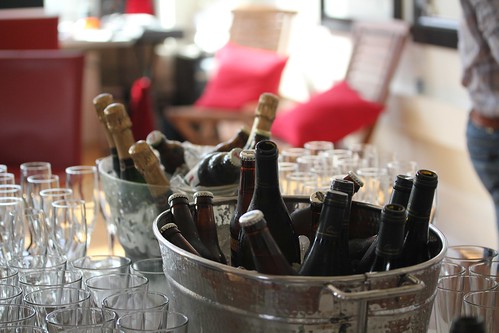
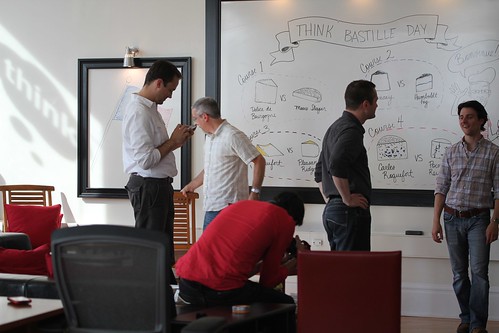
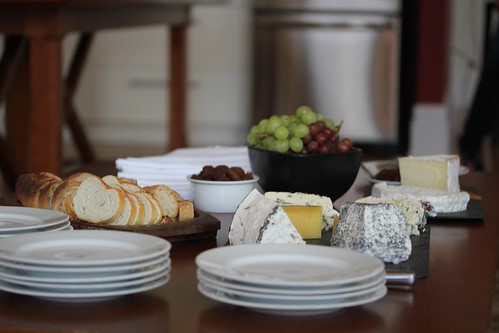
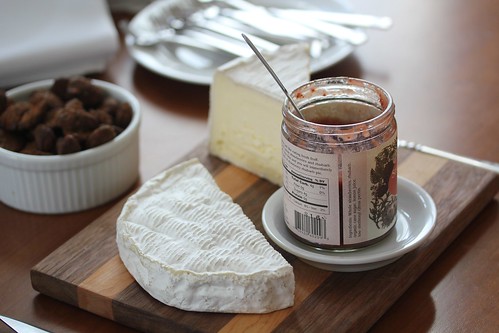
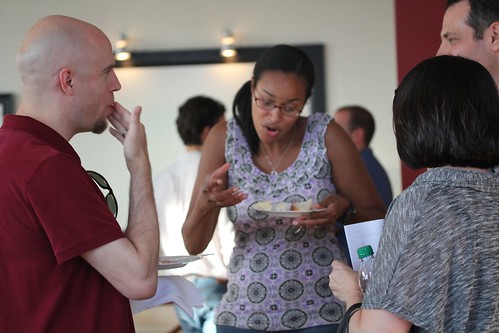
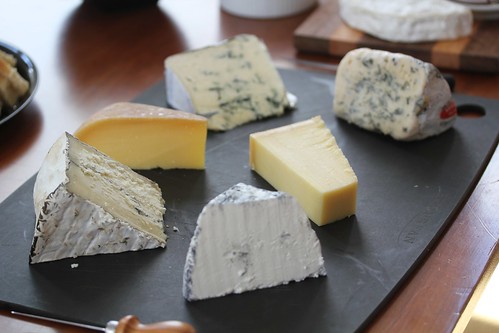
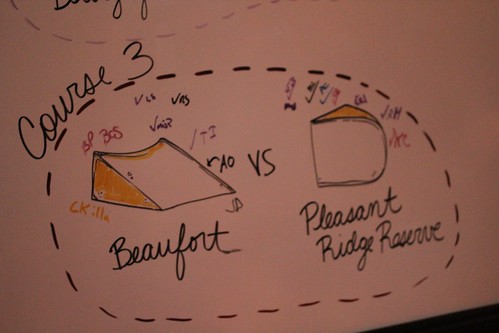
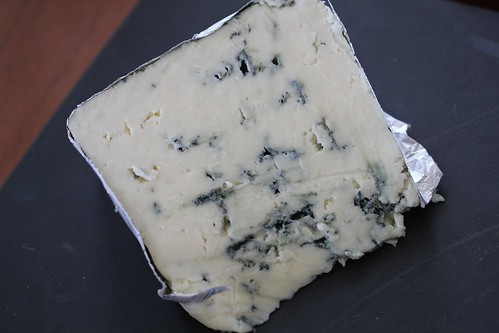
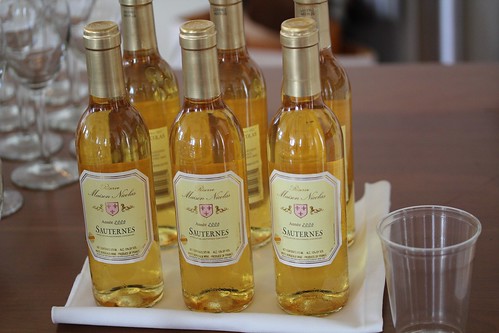
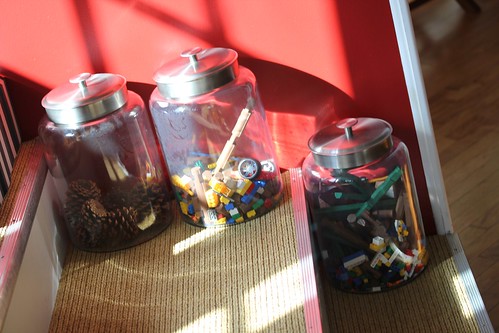
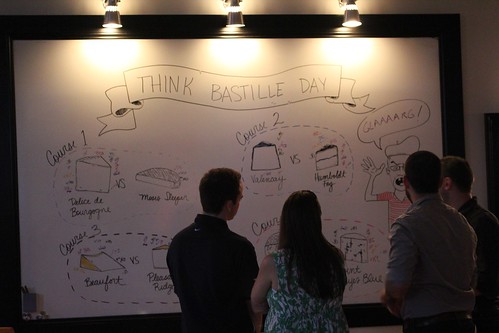
Wow! Really an amazing blog on cutting board designs
ReplyDeleteAwesome.
Thanks for sharing.
Keep sharing more and more.
Very cool! We've always wanted to have a cheese party. maybe when it cools off a bit. I'll melt before the cheese does.
ReplyDeleteMadame, thanks for co-hosting a great event. I'm still getting positive feedback from guests and jealous glances from folks who declined their invitations!
ReplyDeleteMadame, I was in attendance at the event at Think Brownstone. Thanks so much for all your knowledge! One of the things I took away from the night was how well executed it was. Think is known for their experience design and they didn't disappoint. The illustrations were a great idea.
ReplyDeleteIt was a real joy. We (the guests) had clear direction, explanations and guidance. We were then were left to explore on our own. I think it made for a much better experience than trying one cheese after another as a group. It made it more personal and allowed us to go at our own pace.
We had a blast and learned a lot. I even went out and picked up some 'Homboldt" Fog in your honor. Thanks again!
If there was a cheese university, you would be a department chair. That diagram is a brilliant idea and I'm stealing it.
ReplyDeleteWhat are the little notes above each cheese(with a check mark)?
madame, I love your approach to hosting! Reminds me a little bit of classes in pedagogy back in uni - multi-sensory stimulus, small group "work," progressive advancement, etc.
ReplyDeleteHaving a map rather than just labels or cards is so much more engaging, but I particularly like the idea of your smaller tasting islands to promote interaction.
Looking forward to great future posts!
What a lovely way to set up a cheese tasting. Not quite as rigid as other tasting where you go around the plate and eat as directed.
ReplyDeleteSpeaking of scary blue mold, Ann and I bought some of the Artisanal Cabrales at Di Bruno Bros. in Ardmore. It was the first time I really felt there really could be a blue cheese that was too strong strong for me. It tasted like feet. I didn't know whether to groan with ecstasy or wash my mouth with bleach.
ReplyDelete